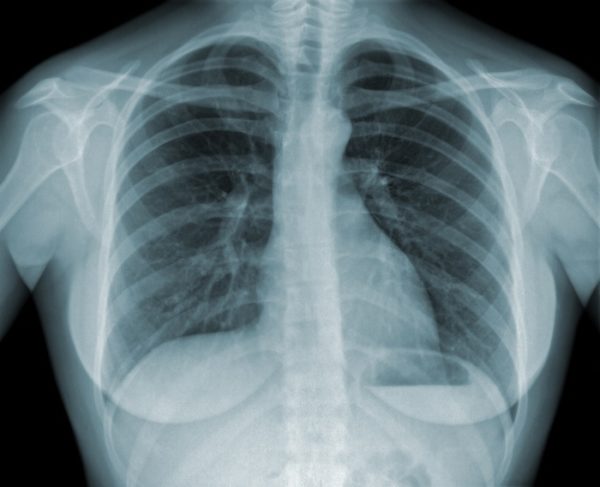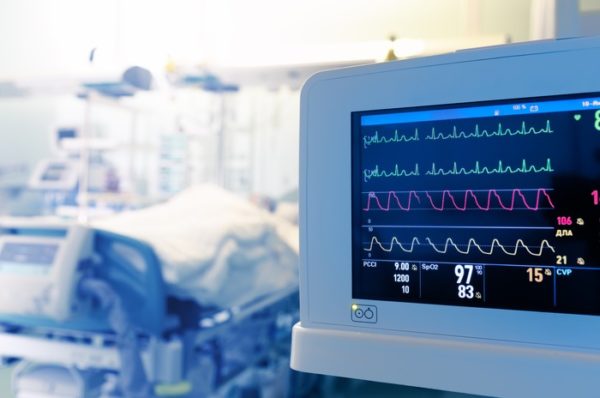Signs of a Pulmonary Embolism After a Car Accident

In most cases, a pulmonary embolism happens when a blood clot in the deep veins of the leg travels to the lungs, blocking one or more of the pulmonary arteries. Because a clot can block blood flow to the lungs, a pulmonary embolism can potentially lead to death.
Receiving prompt medical treatment, however, greatly reduces this risk.
How Can a Pulmonary Embolism Be Caused By a Crash?
During an accident, a person may suffer severe injuries to their legs or other body parts. If there is external or internal bleeding, the body will immediately begin creating clots to seal the injury.
Clots, particularly in the larger veins, may break off and travel through the body, becoming stuck when they reach the lungs. This is process is known as deep vein thrombosis (DVT) ( a thrombosis is the process of a blood clot, also known as a thrombus, forming in a blood vessel).
But clots aren’t the only clumps of material that can wedge themselves in an artery. Blockages in the blood vessels to the lungs can also be caused by fat from the marrow of a broken bone, part of a tumor, or air bubbles.
A pulmonary embolism can also be caused by prolonged immobility, which can happen after a traumatic car accident. Being confined for extended periods of bed rest after surgery or trauma can make you more vulnerable to their development (laying down slows the flow of blood, causing it to pool).
What Is the First Sign of a Pulmonary Embolism?
The symptoms of pulmonary embolism can depend on many different factors, such as what parts of the lung are involved, the size and number of clots, and whether you have any underlying disease affecting the heart or lungs.
The three most common signs or symptoms injured victims may experience include:
- Chest pain - A pulmonary embolism may feel like you’re having a heart attack. The pain is often described as sharp and felt whenever you try breathing in deeply, coughing, or bending over.
- Cough - When coughing, watch for evidence of blood-tinged sputum (a mixture of saliva and mucus from the respiratory tract).
- Shortness of breath - This symptom may appear suddenly and become worse with exertion.
Pulmonary Embolism Warning Signs and Symptoms
Other signs and symptoms that may indicate deep vein thrombosis or a pulmonary embolism include:
- Anxiety
- Back pain
- Clammy or discolored skin (can be red or blue)
- Dizziness, lightheadedness, or passing out
- Excessive sweating
- Fever
- Irregular or rapid heartbeat
- Larger than normal veins in the arms or legs
- Leg pain, swelling, or both (usually in the calf)
Signs of Acute/Submassive Pulmonary Embolism
A submassive pulmonary embolism occurs when there is a dysfunction with the right ventricle of the heart, often due to multiple large clots. A person who at high-risk will look or feel ill, and may be at risk of a heart attack.
In addition to the list of symptoms above, acute pulmonary embolism often manifests as chest pain that:
- Aches, burns, or feels dull/heavy
- Feels sharp or stabbing
- Occurs under the breast bone or one side
- Worsens with deep breaths

What Is Happening to the Lungs During a Pulmonary Embolism?
Blood travels from your heart to your lungs through the pulmonary artery. When the blood reaches the lungs, the cells are supplied with oxygen and return to the heart, which pumps the oxygen-rich blood supply to the rest of the body.
When a clot becomes stuck in one of the many arteries that go from the heart to the lungs, it’s called a pulmonary embolism (PE).
Typically, many clots are involved in a pulmonary embolism. The parts of the lung being served by a blocked artery eventually become starved of nutrients in the blood and start to die. This event is called pulmonary infarction.
The more parts of the lung that weaken or die, the more difficult it becomes for the lungs to provide oxygen to the rest of the body.
Who Is At-Risk for Developing a Pulmonary Embolism?
A car accident may only be a contributing factor. Risk factors for developing a pulmonary embolism include:
- Cancers and chemotherapy
- Family history of venous blood clots or pulmonary embolism
- Genetic disorders that affect the blood and clotting ability
- Heart disease or heart failure
- Leg or hip fractures
- Kidney disease
- Severe Covid-19/coronavirus symptoms
- Surgery (this is one of the leading causes of blood clot issues)
Other issues that increase a person’s risk include smoking, being overweight, taking estrogen or testosterone, and pregnancy.
What Is the Survival Rate of a Pulmonary Embolism?
Pulmonary embolisms are incredibly dangerous and life-threatening. Roughly one-third of people with undiagnosed or untreated pulmonary embolism do not survive.
Pulmonary embolism can even lead to pulmonary hypertension, a condition where the blood pressure in the lungs and right side of the heart is too high. The obstructions in the arteries mean the heart has to work harder to pump blood, increasing blood pressure and ultimately weakening the heart because it is overworked.
See a Doctor Right Away
A pulmonary embolism is a medical emergency. If you have any symptoms related to DVT, see a doctor as soon as possible for a physical exam.
They will look closely at your legs and arms to see if they’re swollen, tender, reddish, or warm. Your doctor will most likely order a chest X-ray or ultrasound. Blood tests may be ordered to measure the amount of oxygen and carbon dioxide in your blood.
Other special tests may include:
- CTPA - This stands for computed tomographic pulmonary angiography and is a special type of X-ray test. Your doctor will inject a dye into your veins to provide contrast for the scan. This allows them to see the blood vessels in your lungs on the X-ray.
- Echocardiogram - This is an ultrasound of the heart and is used to detect if the muscle is strained due to a pulmonary embolism.
- ECG - An electrocardiography test measures your heart’s electrical activity.
- MRI - This is an alternative option if you’re pregnant or if your doctor is concerned that the contrast dye might be harmful to you.
- VQ scan - A ventilation/perfusion scan is used if a CTPA isn’t available. Radioactive materials show which parts of the lungs are receiving airflow and blood flow. If there’s low blood flow to an area but the airflow remains normal, that may be a sign there is a clot present.
How to Treat a Pulmonary Embolism
The most common treatment for a pulmonary embolism is anticoagulants, also known as blood thinners, like warfarin or heparin. The blood thinners keep a clot from getting any bigger and also keeps new clots from forming. However, the treatment does not dissolve clots; your body does that on its own.
A side effect of blood thinners is internal bleeding. Your doctor may do blood tests to make sure your blood does not become too thin.
Emergency treatments include thrombolytic drugs (clot dissolvers - these quickly break up clots causing severe symptoms but can cause sudden bleeding) and embolectomy. During the latter procedure, the doctor will insert a tube into a vein in your arm or leg, then continue to the lung where they’ll remove or dissolve the clot.
Recovering From a Pulmonary Embolism
Talk to your doctor about any diet or medication changes you may need to make if you’re taking blood thinners. You may need to take blood thinners for several weeks or longer.
It’s normal to feel tired or out of breath when walking or doing simple tasks during your recovery. The important thing is to not push yourself too hard and to listen to your doctor.
Our Atlanta Personal Injury Lawyers Can Help
Suffering from pulmonary embolism can be a scary situation. Whether your injury was due to a car accident or developed after surgery to repair your injury from an auto accident, Gary Martin Hays & Associates can help.
Traumatic injuries to the legs and broken or bruised bones after a severe crash are common. Let us review your case and quickly work to make sure you are financially compensated for your pain and suffering.
This type of injury can have long-lasting consequences, especially if not treated immediately. Our experienced car accident attorneys will fight every step of the way to make sure you are taken care of and receive every benefit to which you are entitled.
Chat now or contact us at (770) 934-8000 for a free review of your case.

 Find a location near you
Find a location near you